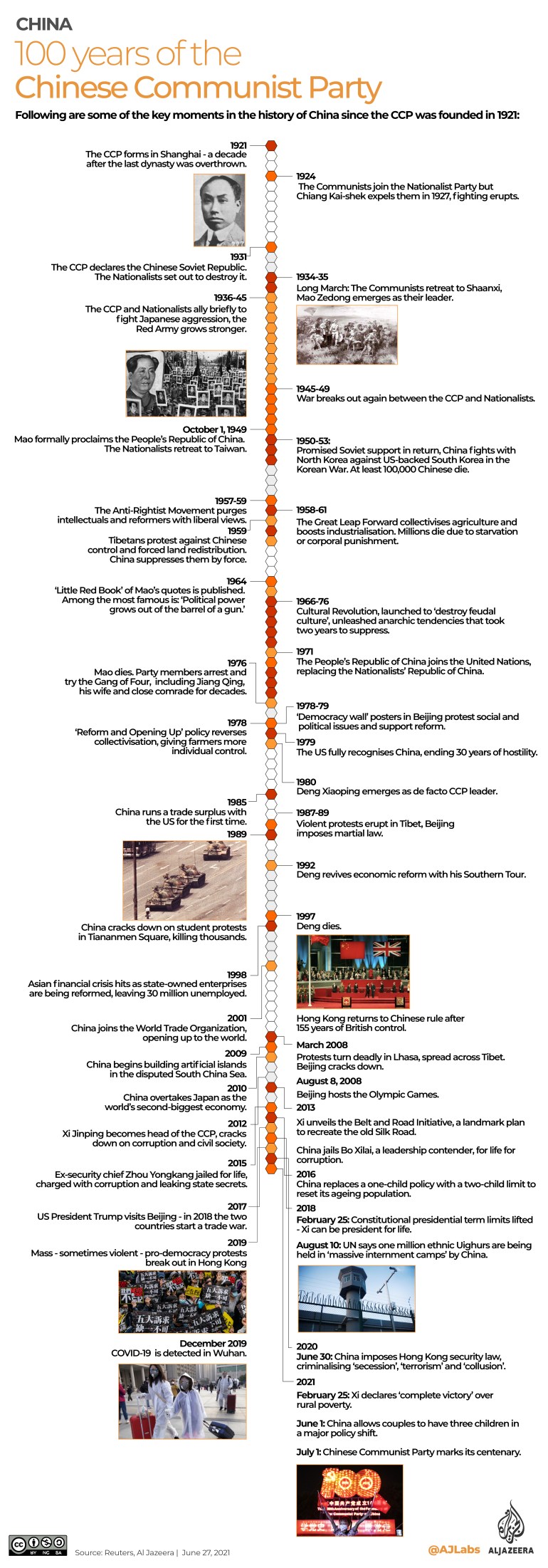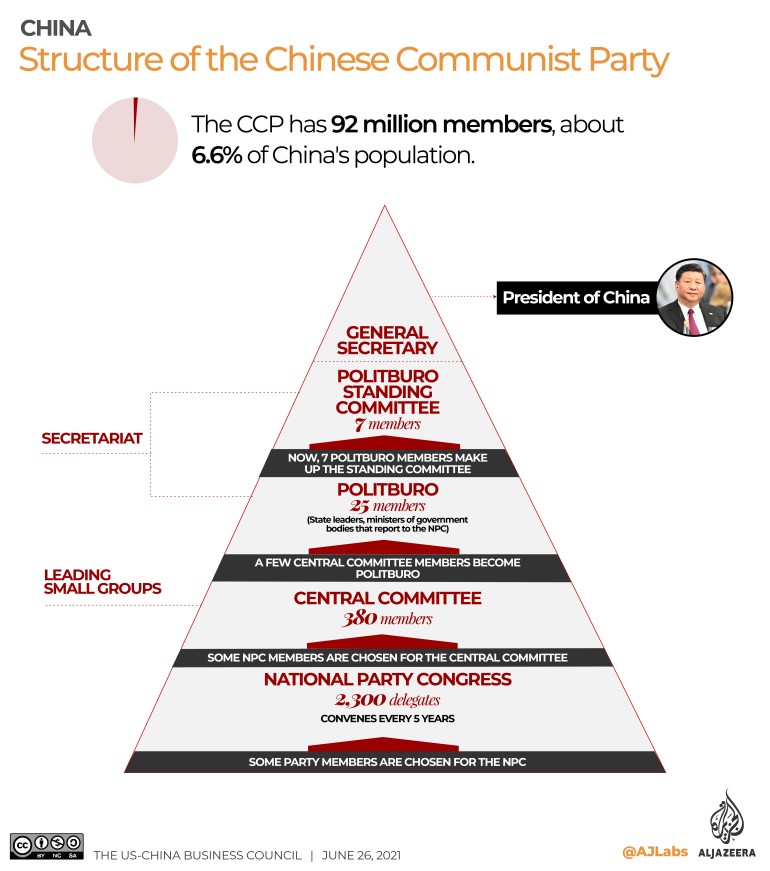
Infographic: 100 Years of the Communist Party of China | Interactive News
[ad_1]
China will celebrate the 100th anniversary of the founding of the Communist Party of China on July 1.
On July 23, 1921, inspired by the Bolshevik revolution in Russia, a group of Chinese revolutionaries secretly established the CCP in Shanghai. At that time, China was a poor country with civil wars.
In 1949, with the support of the majority of the rural population, the CCP successfully overthrew the Chiang Kai-shek National Government that had retreated to Taiwan Island.
On October 1st of the same year, Mao Zedong, Chairman of the Communist Party of China, announced the establishment of the People’s Republic of China in Beijing.
After Mao Zedong came to power, he tried to accelerate China’s industrial development through bold but sometimes disastrous policies, including the Great Leap Forward in 1958, an agricultural collectivization movement, which led to an estimated 30 million starvation deaths.
In 1966, Mao Zedong launched the Cultural Revolution, launched a fanatical Red Guard, destroyed all the remains of China’s “feudal culture”, and once again pushed the country into chaos. Historians believe that as many as 2 million people may have died in the anarchy that swept the country.
After Mao Zedong’s death in 1976, the new leader of the CCP initiated a series of political and economic reforms, including opening the country to international trade and investment. In the following five years, the CCP has witnessed rapid economic growth, lifted tens of millions of people out of poverty, and transformed China into a major global power.
It is 100 years old this year, and the Chinese Communist Party is one of the few communist parties to maintain power into the 21st century. Under the leadership of President Xi Jinping, China’s most powerful leader since Mao Zedong, the party went further into Chinese society and ruthlessly suppressed dissent, including Tibet, Xinjiang, and Hong Kong.
Many analysts say that the CCP is at the peak of its power in a century, but the party is facing a series of new domestic and international challenges.
They include economic inequality, environmental degradation, and trade, political, and human rights tensions with the United States and other developed countries.
The following are some key moments in Chinese history since the founding of the Communist Party of China:

The Communist Party of China has approximately 92 million party members, accounting for approximately 6.6% of China’s total population.
The structure of the party and government are intertwined to a certain extent. The party occupies two-thirds of the National People’s Congress (the government’s legislative lower house) and has a dominant position in the government’s legislature.
The CCP supervises central, provincial, and local government agencies. The smaller parties that are allowed to enter the National People’s Congress (NPC) are those that accept the CCP as the main power participant.
The National Congress of the Communist Party of China is held every five years. There are about 2,000 delegates (the number varies from leader to leader). The final selection of candidates for the Central Committee is about 200. The Central Committee meets once a year to elect the Politburo (Politburo), which can include up to 25 people. The Politburo is the leading body of the Chinese Communist Party.
The general secretary is elected from the Politburo, which is the party’s single highest authority and also the chairman of the Chinese government. The armed forces, judiciary and all other government agencies are supervised by the Chinese President.


[ad_2]
Source link



